Building of the Month - May 2018


The Irish Georgian Society, in partnership with Dublin City Council, has been undertaking the restoration of the City Assembly House, South William Street, Dublin, with the aim of reinstating it as a cultural venue in the historic heart of the city. The first of two phases of works was completed in 2013 and allowed the Society to move into the building which now serves as its headquarters. The second phase of works began in April 2017 and saw the restoration of the Exhibition Room.
The works have been made possible through the support of the Gilbert and Ildiko Butler Family Foundation; the Jerome L. Greene Foundation; the Department of Culture, Heritage and the Gaeltacht; and the generosity of foundations and supporters in Ireland, the UK and the USA.
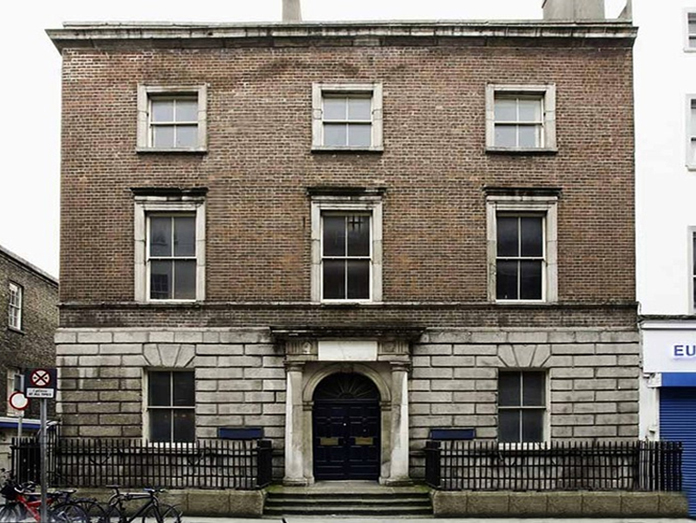
The City Assembly House
The City Assembly House was the first purpose-built public art gallery in Great Britain and Ireland. It was built by the Society of Artists in Ireland between 1766 and 1771 with the expressed aim of promoting the work of Irish artists and providing an academy for the arts. Its architect is unknown although the façade is attributable to Oliver Grace who exhibited ‘an elevation, proposed as a front to the Exhibition Room’ with the Society of Artists in 1768.
.jpg)
Situated in an area once known as the lands of Tib and Tom’, South William Street was part of the eastward expansion of Dublin as it outgrew its medieval confines in the seventeenth century. The immediate area was leased (1671) and developed (1676) by William Williams and was first illustrated AN ACCURATE SURVEY of the CITY and SUBURBS of DUBLIN by Mr. Rocque with Additions and Improvements By Mr. Bernard Scale to 1773 (1773) where the Exhibition Room is clearly defined and given the initials “ER“. The Georgian streetscape survives remarkably intact with its two great legacies comprising the City Assembly House and the adjoining Powerscourt Townhouse which are set alongside one of the most complete groupings of eighteenth-century merchants’ houses in the city.
The construction of the City Assembly House was led by two prominent members of the Society of Artists: Simon Vierpyl (c.1725-1810), a celebrated sculptor who was much patronised by Lord Charlemont, and Richard Cranfield (1731-1809), one of the most distinguished woodcarvers and gilders of the period. Following the success of their first exhibition held in 1765 in Napper’s Great Room, George’s Lane, the Society of Artists resolved to construct their own purpose-built exhibition rooms and art academy.
To raise funds for the building, the Society sought subscriptions of three guineas for which a silver ticket was presented allowing the recipient and his heirs free entrance to exhibitions so long as the Society continued in existence. The first exhibition in the top-lit octagonal Exhibition Room was held in March 1766 and surviving catalogues of this and later exhibitions give a fascinating insight to the calibre of artists attracted by the Society including included William Ashford (1746-1824), Jonathan Fisher (c.1740-1809) and Thomas Roberts (1748-78).
The Society subsequently sought to raise parliamentary grants to build a new academy facing on to South William Street which, they stated, would be ‘of the greatest Advantage to the Arts and Manufacturers of this Kingdom, particularly to Painting, Sculpture, Architecture, Engraving, Carving, Pattern Drawing, Upholsterers, Coach-Makers, Silver-Smiths, Weavers, Carpet-Makers, Stucco Workers, Embroiderers, Carpenters Smiths etc.’.
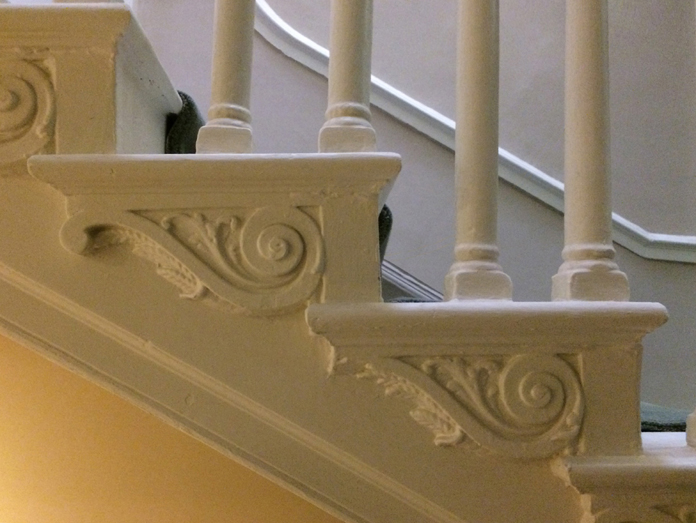
By 1771 sufficient funds were raised to complete a three-storey over basement red brick building with a rusticated granite ashlar ground floor and a doorcase, sill course and eaves course of Portland Stone. Much of the original interior joinery survives intact, including lugged door and windows architraves, and an open well staircase with ornate tread ends. The staircase hall has fine rococo plasterwork with baskets and scrolled acanthus leaves and is top-lit through a balustraded opening on the uppermost floor.
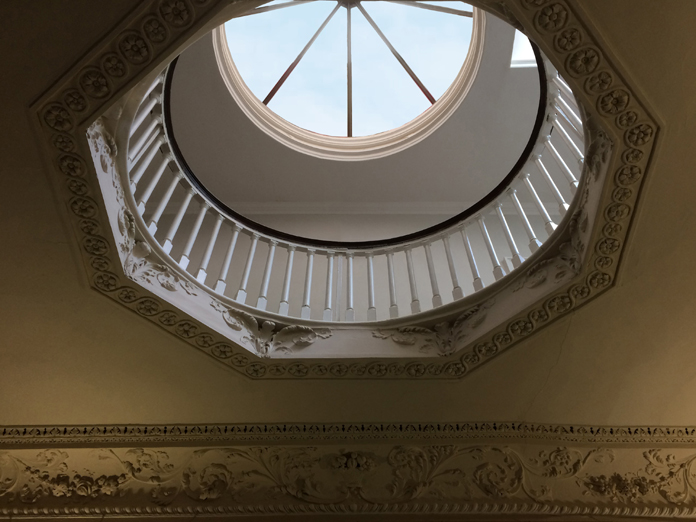
The Society of Artists’ pivotal role in the promotion of Irish art was short lived and the last exhibition was held in the building in 1780. The City Assembly House was subsequently used for a variety of purposes including public auctions and society balls. Trinity College Dublin’s Historical Society, the world’s oldest student society, convened in the premises in 1794 and, five years later, the Bar of Ireland met to debate the proposed Act of Union. In 1791 Dublin Corporation began to hold its meetings in the City Assembly House as The Tholsel on Skinners Row, where it had previously convened, had fallen into disrepair. The Corporation was charged an annual rent of 30 guineas by Richard Cranfield who, by that time, had acquired full ownership of the premises.
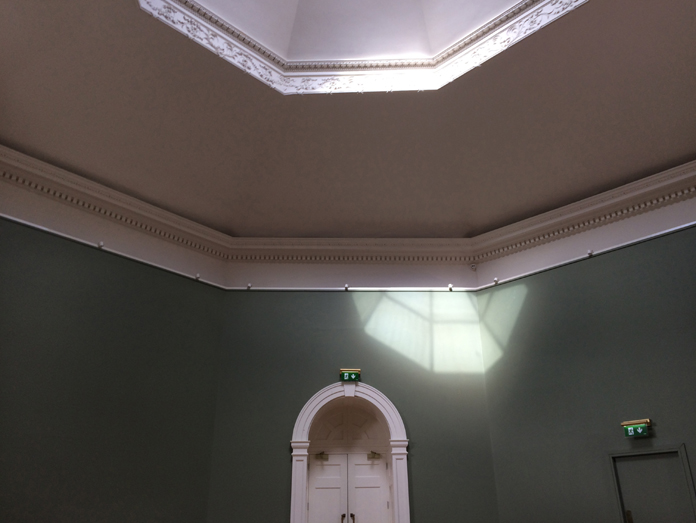
In 1809 the Corporation acquired the City Assembly House on a 100 year lease and undertook considerable works in order to adapt it as an unofficial City Hall. The octagonal Exhibition Room was fitted out as a debating chamber for the Commons and the great Wyatt windows, which today flood the room with light, were inserted. The chamber beneath it was fitted out to serve as a Court of Conscience. On the first floor a suite of rooms was adapted to serve as meeting chambers for the City Aldermen with decorative plasterwork executed by Charles Thorp (d. 1817), the stuccodore and future Lord Mayor of Dublin.
As a centre of political activity, the City Assembly House played host to a momentous debate in 1843 led by Daniel O’Connell (1775-1847) on the repeal of the Act of Union. The debate lasted for three days and, during this, O’Connell spoke for four hours and ‘delivered a speech, which, even among his, had no superior’. O’Connell is said to have ‘painted a glowing picture of the wealth, peace, and dignity which would accrue to Ireland from the presence of a Parliament in College Green’. Isaac Butt (1813-79), then an opponent of the repeal movement, spoke robustly in favour of the Union though O’Connell’s motion was passed by 41 votes to 15.
In 1852 the Corporation moved to The Royal Exchange, Dame Street, at which time the Court of Conscience was moved upstairs into the octagonal room where it remained until it was abolished in 1924. The space it vacated below was adapted as an engine house and stabling for the Dublin Fire Brigade and the site is described as a Fire Brigade Sta. on an 1864 Ordnance Survey map.
In the early 1920s the octagonal room housed the outlawed Supreme Court of the Irish Republic and, up until 1945, retained a dais for the Mayoral Bench and a gallery. These fittings were removed by the Corporation to the chagrin of the Old Dublin Society which had been meeting in the room since 1934. However, as the room was also used for processing payments to “blind persons” the Corporation reasoned that the fittings were potential hazards to the visually impaired.
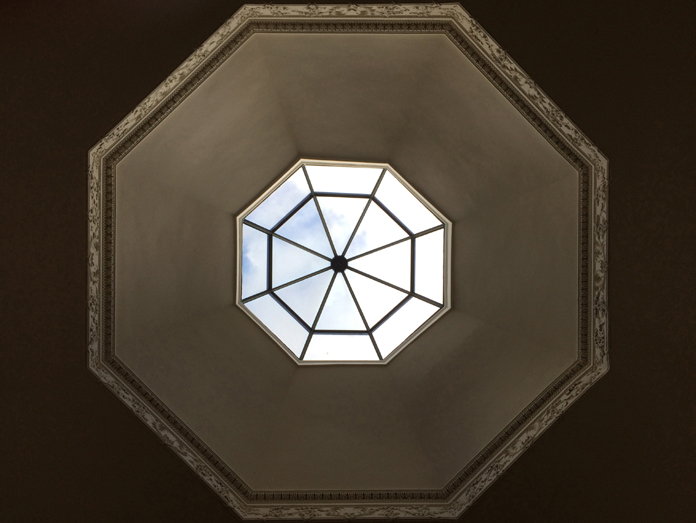
In 1952 the Old Dublin Society collaborated with Dublin Corporation in establishing a Civic Museum in the building exhibiting a collection of items donated or loaned by its members. The museum was officially opened by President Seán T. O’Kelly (1882-1966) on Easter Monday 1953 and flourished until 2003 when it was closed for essential remedial works. Today the collection is held in storage by Dublin City Council and will be catalogued to allow for proper access for research purposes.
Since the time it was conceived and built by the Society of Artists, the City Assembly House has played a central role in the public life of Dublin whether in promoting the arts, serving as the assembly rooms for Dublin Corporation or being the home of the Old Dublin Society and the Dublin Civic Museum. The new lease of life that will be brought to the building by the Irish Georgian Society will ensure that it will continue to play this role into the future.
Back to Building of the Month Archive